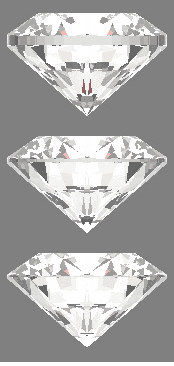No products in the cart.
Learn: Girdle Thickness
LEARN: GIRDLE THICKNESS
Girdle Thickness
The girdle is the edge of the diamond and this is measured in relative thickness and the type of finish.
Girdles always used to be bruted which meant two diamonds were ground round on each other. This resulted in a dull waxy appearance. These days most larger diamonds are faceted with lots of very small flat facets or they are polished smooth. A faceted girdle does not improve a diamonds grade, although a bruted girdle looks much worse if the stone is a fish-eye.
Girdle thickness should ideally be between thin, medium and slightly thick. There is almost always some variation in girdle thickness around a stone, often there are small four thin areas reflecting the original shape of the octahedral rough diamond crystal. These thin areas should not be set in exposed positions because these are often cleavage directions. If a diamond is struck in these directions extremely thin to thin girdles can and will chip.
Diamonds with thick, very thick, or extremely thick girdles weigh considerably more but are still worth buying if the price is right. There may be very small amounts of light loss when viewed in some directions.
While very thin girdles are not recommended for claw set rings, they are OK in pendants and earrings. Even set this way there is always a risk a jeweller will chip the girdle while setting the diamond if it is too thin.
Very thick, medium, and very thin girdle.

